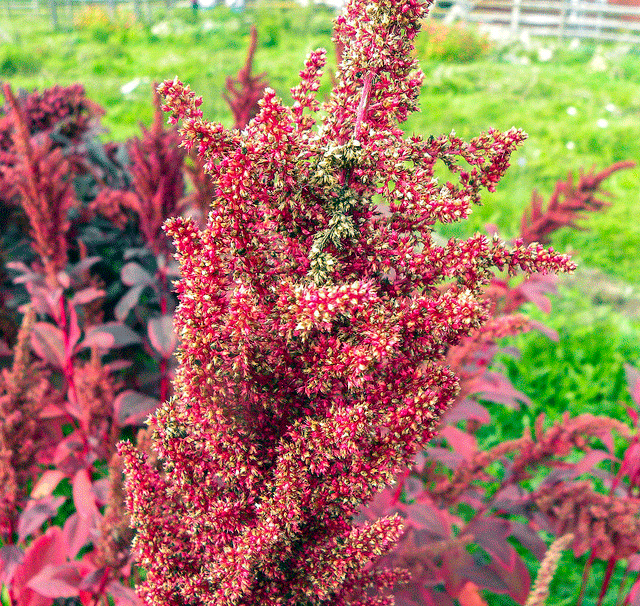Easy to cook, utterly delicious, and versatile, it’s no wonder that amaranth has become popular in recent years. Like other grains such as spelt, quinoa, and millet, amaranth is a staple at health food stores and at some supermarkets. Americans are embracing its many uses and numerous health benefits. It can be cultivated as both a leafy green vegetable and as a high-protein grain.
I remember seeing “pigweed,” which is another name for wild amaranth, growing profusely all over my childhood gardens. I always love seeing bright amaranth fields in the mountainous highlands outside of Mexico City, where it thrived when the Aztecs cultivated it back in the fourteenth century. Amaranth was a staple of early Mayan and Aztec civilizations, until the Spanish missionaries and conquistadors arrived and forbade the natives from planting it, which helped bring about the end of those great civilizations and led to dependence on the colonial government.
For nearly five hundred years after that, amaranth more or less faded into obscurity in the Americas, while corn and wheat became the go-to grains. But in 1974, the influential organic farmer and publisher Robert Rodale brought it to the attention of newly health-conscious Americans, who liked the nutty taste of the seeds. Since then, it’s become a staple of vegetarian and vegan diets, and an alternative to flour for people who are sensitive to gluten.
Horticulturists also love it as an ornamental plant—the cascading red tassels of the Love-Lies-Bleeding have brightened many a cottage garden since the nineteenth century.
Growing Tips
Amaranth is by far one of the easiest vegetables to grow from seed, and it thrives in most climates, even those with short growing seasons. Two weeks after the last frost, sprinkle the tiny seeds onto the soil and keep moist. Within ten to twelve days, small seedlings will sprout. There will probably be far too many to keep up with, so thin them to about one foot apart for smaller varieties, like Joseph’s Coat, Green Calaloo, and Thai types, and two to three feet apart for larger varieties. Amaranth is rather drought-resistant and doesn’t need a lot of water. Most gardeners are able to harvest delicious greens within forty days or so after planting.
Pests and Disease
Almost all pests steer clear of amaranth, except for the striped cucumber beetle, which is a major threat in the early growing stages. Use organic controls to keep this beetle at bay, including spinosad, pyrethrins, and netting. Once the plant reaches maturity, it is thought to produce a chemical that kills or at least deters cucumber beetles, and the problem usually goes away.
Seed Saving
Amaranth is wind-pollinated, so if you want to save pure seeds, make sure to separate varieties by planting them at least a half mile apart. If you don’t have that much space to separate them, just cultivate one variety at a time. To harvest the seeds, let flower heads grow until maturity and then, about eighty days after sowing, cut them at the stem and place them in the bottom of a cardboard box to store in a cool, dry place. Once they are dry, winnow the chaff from the seeds by pouring the mix, a little at a time, into a bucket placed three to five feet below. As you pour the seeds, the chaff will blow away, because it is lighter than the seeds. If you have trouble, vary the distance that you are pouring, depending on the speed of wind; sometimes it helps to use an electric fan. Store seeds in jars in a cool, dry place. They should remain viable for up to five years.


